GUIDE TO FINANCIAL MARKETS
Marc Levinson is a former finance and economics editor of The Economist. He was previously a senior writer at Newsweek and more recently spent 10 years as an economist with JPMorgan Chase. He has published widely on economic subjects in such journals as Harvard Business Review and Foreign Affairs, and is currently senior fellow in international business at the Council on Foreign Relations in New York.
GUIDE TO FINANCIAL MARKETS
Why they exist and how they work
Seventh edition
Marc Levinson

Published under exclusive licence from The Economist by
Profile Books Ltd 3 Holford Yard
Bevin Way
London WC1X 9HD
www.profilebooks.com
Copyright The Economist Newspaper Ltd, 1999, 2000, 2002, 2006, 2010, 2014, 2018
Text copyright Marc Levinson, 2018
All rights reserved. Without limiting the rights under copyright reserved above, no part of this publication may be reproduced, stored in or introduced into a retrieval system, or transmitted, in any form or by any means (electronic, mechanical, photocopying, recording or otherwise), without the prior written permission of both the copyright owner and the publisher of this book.
The greatest care has been taken in compiling this book. However, no responsibility can be accepted by the publishers or compilers for the accuracy of the information presented.
Where opinion is expressed it is that of the author and does not necessarily coincide with the editorial views of The Economist Newspaper.
While every effort has been made to contact copyright-holders of material produced or cited in this book, in the case of those it has not been possible to contact successfully, the author and publishers will be glad to make amendments in further editions.
A CIP catalogue record for this book is available from the British Library
eISBN 978 1 78283 438 0
Contents
Tables
Figures
1
Why markets matter
THE EURO IS SLIGHTLY HIGHER against the yen. The Dow Jones Industrial Average is off 18 points in active trading. A Chinese airline loses millions of dollars with derivatives. Following the Bank of Englands decision to lower its base rate, monthly mortgage payments are set to fall.
All these events are examples of financial markets at work. That markets exercise enormous influence over modern life comes as no news. But although people around the world speak glibly of Wall Street, the bond market and the currency markets, the meanings they attach to these time-worn phrases are often vague and usually out of date. This book explains the purposes different financial markets serve and clarifies the way they work. It cannot tell you whether your investment portfolio is likely to rise or to fall in value. But it may help you understand how its value is determined, and how the different securities in it are created and traded.
In the beginning
The word market usually conjures up an image of the bustling, paper-strewn floor of the New York Stock Exchange or of traders motioning frantically in the futures pits of Chicago. These images themselves are out of date, as almost all of the dealing once done face to face is now handled computer to computer, often with minimal human intervention. And formal exchanges such as these are only one aspect of the financial markets, and far from the most important one. There were financial markets long before there were exchanges and, in fact, long before there was organised trading of any sort.
Financial markets have been around ever since mankind settled down to growing crops and trading them with others. After a bad harvest, those early farmers would have needed to obtain seed for the next seasons planting, and perhaps to get food to see their families through. Both of these transactions would have required them to obtain credit from others with seed or food to spare. After a good harvest, the farmers would have had to decide whether to trade away their surplus immediately or to store it, a choice that any 21st-century commodities trader would find familiar. The amount of fish those early farmers could obtain for a basket of cassava would have varied day by day, depending upon the catch, the harvest and the weather; in short, their exchange rates were volatile.
The independent decisions of all of those farmers constituted a basic financial market, and that market fulfilled many of the same purposes as financial markets do today.
What do markets do?
Financial markets take many different forms and operate in diverse ways. But all of them, whether highly organised, like the London Stock Exchange, or highly informal, like the money changers on the street corners of some African cities, serve the same basic functions.
 Price setting. The value of an ounce of gold or a share of stock is no more, and no less, than what someone is willing to pay to own it. Markets provide price discovery, a way to determine the relative values of different items, based upon the prices at which individuals are willing to buy and sell them.
Price setting. The value of an ounce of gold or a share of stock is no more, and no less, than what someone is willing to pay to own it. Markets provide price discovery, a way to determine the relative values of different items, based upon the prices at which individuals are willing to buy and sell them.
 Asset valuation. Market prices offer the best way to determine the value of a firm or of the firms assets, or property. This is important not only to those buying and selling businesses, but also to regulators. An insurer, for example, may appear strong if it values the securities it owns at the prices it paid for them years ago, but the relevant question for judging its solvency is what prices those securities could be sold for if it needed cash to pay claims today.
Asset valuation. Market prices offer the best way to determine the value of a firm or of the firms assets, or property. This is important not only to those buying and selling businesses, but also to regulators. An insurer, for example, may appear strong if it values the securities it owns at the prices it paid for them years ago, but the relevant question for judging its solvency is what prices those securities could be sold for if it needed cash to pay claims today.
 Arbitrage. In countries with poorly developed financial markets, commodities and currencies may trade at very different prices in different locations. As traders in financial markets attempt to profit from these divergences, prices move towards a uniform level, making the entire economy more efficient.
Arbitrage. In countries with poorly developed financial markets, commodities and currencies may trade at very different prices in different locations. As traders in financial markets attempt to profit from these divergences, prices move towards a uniform level, making the entire economy more efficient.
 Raising capital. Firms often require funds to build new facilities, replace machinery or expand their business in other ways. Shares, bonds and other types of financial instruments make this possible. The financial markets are also an important source of capital for individuals who wish to buy homes or cars, or even to make credit-card purchases.
Raising capital. Firms often require funds to build new facilities, replace machinery or expand their business in other ways. Shares, bonds and other types of financial instruments make this possible. The financial markets are also an important source of capital for individuals who wish to buy homes or cars, or even to make credit-card purchases.
 Commercial transactions. As well as long-term capital, the financial markets provide the grease that makes many commercial transactions possible. This includes such things as arranging payment for the sale of a product abroad, and providing working capital so that a firm can pay employees if payments from customers run late.
Commercial transactions. As well as long-term capital, the financial markets provide the grease that makes many commercial transactions possible. This includes such things as arranging payment for the sale of a product abroad, and providing working capital so that a firm can pay employees if payments from customers run late.
 Investing. The stock, bond and money markets provide an opportunity to earn a return on funds that are not needed immediately, and to accumulate assets that will provide an income in future.
Investing. The stock, bond and money markets provide an opportunity to earn a return on funds that are not needed immediately, and to accumulate assets that will provide an income in future.
 Risk management. Futures, options and other derivatives contracts can provide protection against many types of risk, such as the possibility that a foreign currency will lose value against the domestic currency before an export payment is received. They also enable the markets to attach a price to risk, allowing firms and individuals to trade risks so they can reduce their exposure to some while retaining exposure to others.
Risk management. Futures, options and other derivatives contracts can provide protection against many types of risk, such as the possibility that a foreign currency will lose value against the domestic currency before an export payment is received. They also enable the markets to attach a price to risk, allowing firms and individuals to trade risks so they can reduce their exposure to some while retaining exposure to others.
Next page


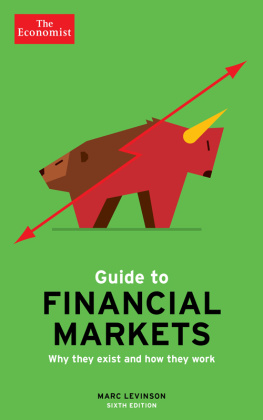

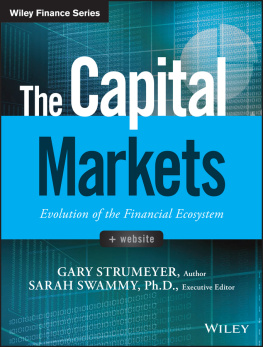
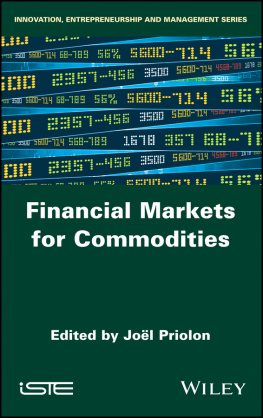

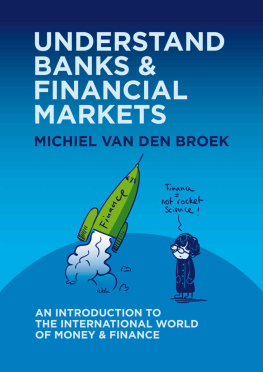
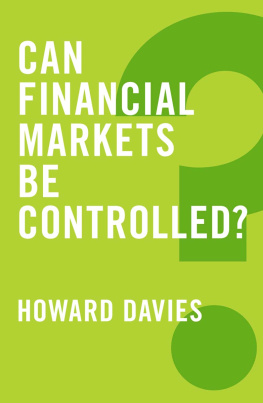

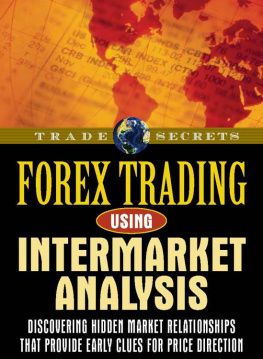

 Price setting. The value of an ounce of gold or a share of stock is no more, and no less, than what someone is willing to pay to own it. Markets provide price discovery, a way to determine the relative values of different items, based upon the prices at which individuals are willing to buy and sell them.
Price setting. The value of an ounce of gold or a share of stock is no more, and no less, than what someone is willing to pay to own it. Markets provide price discovery, a way to determine the relative values of different items, based upon the prices at which individuals are willing to buy and sell them.